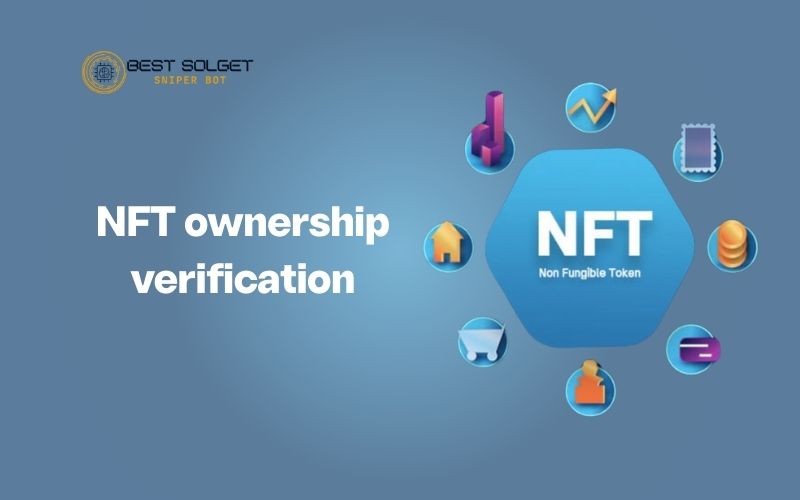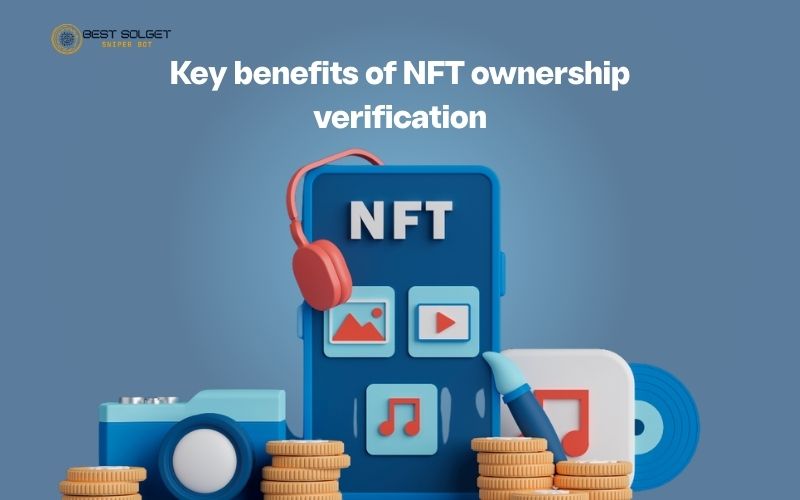In the evolving world of digital assets, Non-Fungible Tokens (NFTs) have redefined how ownership is managed and secured. However, as the market grows, so does the need for effective NFT ownership verification. Ensuring that your NFTs are properly verified not only protects your investments but also strengthens your confidence in the digital economy. This article explores why secure verification processes are crucial and how they safeguard your valuable assets.
Why NFT ownership verification is important?

As digital assets continue to gain value, NFT ownership verification has become a critical step to safeguard personal property. Holding a verified NFT provides undeniable proof of ownership recorded securely on the blockchain. This helps minimize the risk of theft or loss of access to valuable digital collections. A strong verification system ensures that assets are protected and recognized across global markets. It builds a foundation of trust for collectors and investors navigating the expanding digital economy.
Verification processes are equally important in preventing fraud, a growing concern in the NFT market. Without proper checks in place, users are vulnerable to scams involving forged or duplicated assets. Fraudsters can easily replicate NFTs and sell them without true ownership, leading to disputes and financial loss. With strict verification measures implemented by marketplaces, buyers gain confidence that the assets they purchase are genuine. This protection strengthens the reputation and integrity of NFT trading platforms.
In addition to asset protection and fraud prevention, verifying ownership enhances transparency throughout the blockchain ecosystem. Publicly recording ownership allows transactions to be easily audited, creating a trust based environment for all participants. Transparent verification helps boost the credibility and perceived value of NFT projects within the community. In the long run, clear and trustworthy verification processes are vital for maintaining fairness and driving sustainable growth in the digital economy.
How NFT ownership verification works?
NFT ownership verification operates through an intricate system where each NFT holds unique metadata, including tokenID, smart contract address, transaction history, and other authentication data. When an NFT is minted, it is permanently linked to a digital or physical asset, effectively creating a tamper proof “certificate of ownership” recorded on the blockchain. This connection ensures that the origin and authenticity of each NFT can always be verified. Thanks to blockchain’s immutable nature, once the information is written, it cannot be altered or erased, providing a secure foundation for ownership verification.
To verify ownership, users simply inspect key details embedded within the blockchain. The tokenID and the smart contract address are essential identifiers that link the NFT to its original asset. Alongside this, the metadata reveals critical information such as the creation date, the artist’s name, and the ownership history. Each transaction associated with the NFT leaves a permanent trace, allowing users to confirm the sequence of ownership transfers transparently. This open verification process empowers buyers and collectors to make informed decisions with full confidence.
Another important component is the creator’s digital signature, which is embedded during the minting process. The digital signature acts as a cryptographic stamp that confirms the authenticity of the NFT’s origin. Verifying the creator’s signature ensures that the asset was issued by the legitimate source and has not been tampered with. Together, these elements form a comprehensive verification framework, making NFT ownership verification a reliable and essential practice in safeguarding digital assets.
Key benefits of NFT ownership verification

In the growing world of digital assets, NFT ownership verification offers significant value for both owners and investors. Verifying ownership not only protects personal assets but also builds trust across the entire blockchain ecosystem. With a transparent and secure recording system, adopting verification processes is becoming the new standard in the modern digital asset industry.
- High security: All NFT related data is stored directly on the blockchain, a decentralized system with extremely high security. Ownership information cannot be altered, deleted, or forged, providing absolute protection for users’ digital assets.
- Transparency: Every transaction, from the creation of the NFT to each transfer, is recorded publicly on the blockchain. Users can easily check transaction history and confirm ownership with just a few simple steps, enhancing the credibility of the asset.
- Time and cost efficiency: Traditional verification processes often require complicated paperwork and considerable time. With NFTs, this process is fully digitized, allowing asset transfers to be completed in just a few minutes without tedious formalities.
- Increased liquidity: Assets linked to NFTs can be traded and transferred globally with ease. Fast and transparent verification processes make NFTs more attractive to investors and help stimulate asset circulation in international markets.
Tips to enhance security with NFT ownership verification
One of the most effective ways to enhance the security of your NFTs is by using a hardware wallet. A hardware wallet stores private keys offline, separate from the internet, which significantly reduces the risk of hacks or security breaches. When NFTs are stored in a hardware wallet, the chances of losing assets due to vulnerabilities are minimized. This method is widely trusted by professional collectors and large investors. Investing in a high quality hardware wallet is the first line of defense for your digital assets.
In addition to secure storage, it’s important to regularly verify your NFT ownership verification. Suspicious transactions or unauthorized changes in ownership can occur if your account is compromised. By periodically checking on the blockchain, you can quickly identify any unusual activity. This not only protects your current assets but also helps in addressing issues swiftly. Being proactive in checking is essential to maintain full control over your NFTs.
Finally, choosing reputable sources to purchase NFTs plays a key role in ensuring safety. Always prioritize transactions on well known platforms like OpenSea, Foundation, or verified artists. Purchasing from unclear sources can lead to acquiring counterfeit NFTs or falling victim to scams. Major platforms often have strict verification processes, reducing risks for buyers. Choosing the right place to trade is a smart way to protect your digital assets.
Continue following Best Sol Sniper Bot for more insights and updates to help you navigate the dynamic world of digital assets with confidence.
